
Archeologia e Calcolatori
Scope & Guideline
Unveiling the Past with Cutting-Edge Computational Insights
Introduction
Aims and Scopes
- Digital Archaeology and Methodologies:
The journal consistently publishes research on the use of digital tools and methodologies in archaeology, including 3D modeling, GIS, and photogrammetry, facilitating new ways to document and analyze archaeological sites. - Cultural Heritage Preservation:
A significant focus is on the preservation and documentation of cultural heritage, exploring how modern technologies can aid in the conservation and interpretation of archaeological findings. - Community Engagement and Participatory Projects:
The journal highlights projects that involve community participation in archaeological research, showcasing collaborative approaches to heritage management and public archaeology. - Interdisciplinary Research:
There is a strong emphasis on interdisciplinary studies, integrating fields such as history, architecture, and environmental science to enrich archaeological research and understanding. - Sustainability and Ethical Practices:
The journal addresses sustainability in archaeological practices, discussing ethical considerations in fieldwork, data management, and the use of technology.
Trending and Emerging
- 3D Modeling and Virtual Reality:
Recent publications have increasingly focused on 3D modeling and virtual reality applications, enhancing the visualization and interaction with archaeological data, which is crucial for both research and public engagement. - Machine Learning and AI in Archaeology:
There is a growing trend in utilizing machine learning and artificial intelligence for data analysis in archaeology, enabling researchers to process large datasets and uncover patterns in archaeological findings. - GIS and Spatial Analysis:
The use of Geographic Information Systems (GIS) for spatial analysis in archaeological research is on the rise, allowing for more sophisticated interpretations of spatial relationships and landscape use. - Augmented Reality and Interactive Exhibits:
Emerging themes include the integration of augmented reality in museum exhibits and archaeological sites, enhancing visitor experiences and educational outreach. - Sustainable Archaeological Practices:
There is an increasing focus on sustainable practices within archaeological research, including discussions about the impact of archaeological activities on environments and communities.
Declining or Waning
- Traditional Archaeological Techniques:
There appears to be a waning interest in purely traditional excavation and survey methods, as the journal shifts towards more technologically advanced approaches, such as digital documentation and analysis. - Historical Artifact Studies:
Research focused solely on the study of individual artifacts without the integration of digital methodologies is becoming less common, indicating a move towards more holistic and technology-driven analyses. - Generalized Archaeological Theory:
Papers that discuss broad theoretical frameworks without specific applications or case studies are less frequent, suggesting a preference for practical, data-driven research that applies theory within specific contexts.
Similar Journals
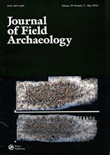
JOURNAL OF FIELD ARCHAEOLOGY
Navigating the Rich Tapestry of Human HeritageJOURNAL OF FIELD ARCHAEOLOGY, published by Routledge Journals, Taylor & Francis Ltd, is a premier scholarly publication dedicated to advancing the field of archaeology. With an impressive impact factor reflecting its significant contributions to both the arts and humanities, this journal ranks in the Q1 category for archaeology, with a remarkable position of #21/413 in the arts and humanities realm and #19/354 in social sciences, placing it in the 95th percentile among its peers. Catering to researchers, professionals, and students alike, the journal has continuously explored critical archaeological questions since its inception in 1974, with a commitment to disseminating high-quality research and innovative methodologies up to the present. Although it operates under a traditional access model, the journal engages a broad readership with its insightful studies and findings, making it an essential resource for anyone deeply involved in archaeology and its related disciplines.
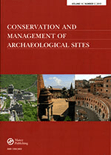
Conservation and Management of Archaeological Sites
Championing Best Practices in Cultural Heritage Management.Conservation and Management of Archaeological Sites is a pivotal academic journal published by Routledge Journals, Taylor & Francis Ltd, focusing on the interdisciplinary fields of archaeology and conservation. With an ISSN of 1350-5033 and an E-ISSN of 1753-5522, this journal strives to publish high-quality research that addresses critical topics related to the conservation and management of archaeological sites, fostering dialogue between practitioners, researchers, and policymakers. Despite being categorized in the third quartile (Q3) across multiple relevant categories such as Archaeology and Conservation in the 2023 rankings, it remains a significant resource for professionals seeking to enhance their understanding and application of best practices in site management. The journal plays a crucial role in disseminating knowledge that contributes to the preservation of cultural heritage, making it an essential read for anyone involved in these vital fields. Published since 1995, the journal not only reflects the growing importance of archaeology in today's society but also provides a platform for emerging research that will shape future conservation strategies.
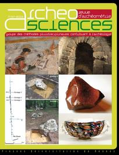
ArcheoSciences-Revue d Archeometrie
Empowering Researchers with Cutting-edge Archaeometric TechniquesArcheoSciences-Revue d Archeometrie is a prominent scholarly journal dedicated to the field of archaeology, published by PRESSES UNIV RENNES in France. With an ISSN of 1960-1360 and an E-ISSN of 2104-3728, this journal has gained recognition for its focus on the intersection of science and archaeological research, aiming to foster interdisciplinary dialogue and innovative methodologies within archaeological studies. Although coverage of the journal has been discontinued in Scopus post-2021, it has maintained a respectable standing with a Q3 Quartile ranking in both the Archaeology (Arts and Humanities) and Archaeology categories as of 2023, as well as commendable Scopus rankings in relevant fields. As an accessible platform for researchers, professionals, and students, ArcheoSciences offers valuable insights into applied techniques and findings in archaeological science, making it an essential resource for those involved in the historical and cultural analysis of material relics. Researchers are encouraged to explore this journal to stay informed about frontier research and ongoing discussions in the discipline.

Archaeologies-Journal of the World Archaeological Congress
Exploring the Depths of Human HistoryArchaeologies: Journal of the World Archaeological Congress is a premier academic journal published by Springer, focusing on the dynamic and interdisciplinary field of archaeology. With an ISSN of 1555-8622 and an E-ISSN of 1935-3987, this journal serves as a significant platform for the dissemination of innovative research, theory, and practice within the archaeological community. Hailed for its rigorous peer-review process, Archaeologies consistently ranks in the 74th percentile among its peers, currently holding a Q2 category placement in the field of archaeology as per the 2023 Scopus rankings. The journal publishes original articles, critical essays, and case studies that emphasize the cultural, historical, and methodological aspects of archaeological research from a global perspective. As a key resource for researchers, professionals, and students alike, Archaeologies facilitates critical dialogue and enhances understanding of humanity's past through archaeology. Although the journal is not open access, it provides various subscription options to ensure its valuable content remains accessible to its diverse audience.
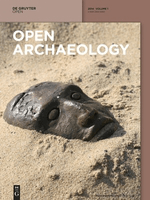
Open Archaeology
Bridging Gaps in Archaeology and EducationOpen Archaeology is a distinguished open-access journal dedicated to publishing high-quality research in the fields of archaeology, conservation, and education. Since its inception in 2015, the journal has established itself under the esteemed publication of DE GRUYTER POLAND SP Z O O, experiencing rapid growth and recognition, culminating in a Q1 ranking in both Archaeology and Conservation categories as of 2023. Based in the vibrant academic environment of Poland, Open Archaeology caters to a global audience, illustrated by its Scopus rankings which position it 16th in Conservation and 69th in Archaeology, showcasing its significant impact in the arts and humanities sphere. The journal aims to foster interdisciplinary discourse and disseminate innovative research findings to enhance understanding and preservation of cultural heritage. With an unwavering commitment to open access, it encourages widespread dissemination of knowledge, making it an invaluable resource for researchers, professionals, and students alike.
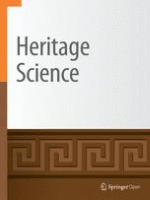
Heritage Science
Advancing the Preservation of Our Cultural LegacyHeritage Science is a prestigious open-access journal, published by Springer since 2013, dedicated to the fields of heritage conservation and archaeology. With an ISSN of 2050-7445, it offers a platform for innovative research and critical discussions, encompassing interdisciplinary approaches that bridge the gap between art, science, and technology. The journal proudly ranks in the Q1 category for both Archaeology (arts and humanities) and Conservation, highlighting its influence and reputation within these scholarly realms. Furthermore, its presence in Scopus with impressive percentile rankings—such as #7 in Conservation and #23 in Archaeology (arts and humanities)—asserts its role as a leading voice in heritage studies. The journal's commitment to open access enhances the dissemination of knowledge, making it an essential resource for researchers, professionals, and students engaged in the preservation and interpretation of cultural heritage. Heritage Science continues to set standards in research quality, encouraging contributions that advance the understanding and sustainability of our shared heritage.
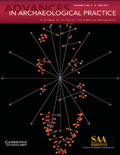
Advances in Archaeological Practice
Uncovering the Past with Cutting-Edge ResearchAdvances in Archaeological Practice, published by Cambridge University Press, is a leading journal in the field of archaeology, emphasizing innovative approaches and methodologies that advance archaeological research. With an ISSN of 2326-3768 and a commendable Q1 ranking in both the Arts and Humanities and Social Sciences categories, the journal effectively bridges theoretical perspectives and practical applications, positioning itself at the forefront of archaeological scholarship. Researchers and professionals can benefit from its high-impact content, reflected in its 93rd percentile ranking in the field, making it an essential resource for those aiming to stay abreast of the latest insights and practices. Although it operates under a subscription model, the quality and relevance of its publications ensure it plays a crucial role in shaping the discourse within the archaeological community and beyond, facilitating access to cutting-edge research that enhances our understanding of past human activities.

Revue Archeologique du Centre de la France
Bridging the Past and Present of Central France's Archaeological StudiesRevue Archeologique du Centre de la France is a prestigious academic journal dedicated to the field of archaeology, with a special focus on the rich historical and cultural heritage of central France. Published by FED EDITION REVUE ARCHEOLOGIQUE CENTRE FRANCE, this journal has been an open-access platform since 2004, ensuring that researchers, professionals, and students can freely access cutting-edge archaeological findings and scholarly discussions. With an acute emphasis on disseminating knowledge and fostering ongoing dialogue in archaeology, Revue Archeologique du Centre de la France serves as a vital resource for those keen to explore the complexities of French archaeological studies. Housed in Tours, this journal not only highlights regional heritage but also situates it within broader archaeological frameworks, making it an essential contribution to the field. Researchers can look forward to engaging with a diverse array of articles that cover both theoretical and applied aspects of archaeology, bolstering the understanding of our shared past.
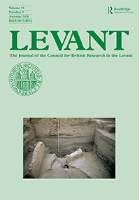
Levant
Advancing Scholarship in Archaeology and HistoryLevant is a prestigious academic journal published by Routledge Journals, Taylor & Francis Ltd, focusing on the fields of Archaeology and History. Since its inception in 1969, the journal has become a vital platform for researchers, professionals, and students interested in Middle Eastern studies, presenting high-quality research that reflects the rich cultural and historical tapestry of the Levant region. With an impressive impact factor and classified as Q1 in both Archaeology and History, Levant showcases innovative scholarship that pushes the boundaries of knowledge while maintaining rigorous academic standards. Although it is not an open-access journal, its articles are widely accessible through libraries and academic institutions, ensuring a broad reach for its impactful publications. With ongoing research converging from 1969 through to 2024, Levant remains a cornerstone for advancing academic discourse and exploration in relevant historical narratives.

Conservation Science in Cultural Heritage
Elevating Standards in Cultural Heritage ScienceConservation Science in Cultural Heritage is a leading academic journal dedicated to advancing the field of conservation science and museology, proudly published by MIMESIS EDIZIONI since 2001. Operating as an Open Access journal, it facilitates unrestricted dissemination of research to scholars, professionals, and students worldwide, promoting the exchange of innovative ideas essential for preserving our cultural heritage. With ISSN 1974-4951 and E-ISSN 1973-9494, the journal has earned recognition for its rigorous scholarly contributions, achieving a Q3 ranking in both conservation and museology categories as of 2023. It ranks at the 57th percentile in Museology and the 44th percentile in Conservation according to Scopus metrics, reflecting its growing impact in the academic community. The journal publishes a diverse range of articles, covering interdisciplinary aspects of conservation practices, research methodologies, and case studies, offering critically important insights for furthering understanding and promoting best practices in the safeguarding of cultural artifacts. Through this international platform, Conservation Science in Cultural Heritage aims to inspire collaborative efforts and elevate the standards of research in the vital area of cultural preservation.